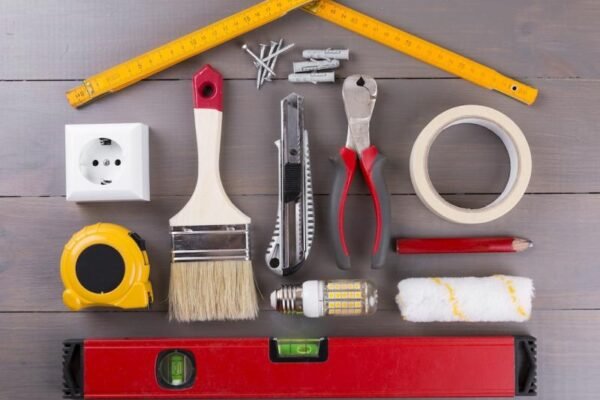Given the consequences of climate change, individuals are increasingly seeking ways to reduce their carbon footprint and live sustainably. One way to achieve this is by implementing eco-friendly upgrades to your home.
According to the Environmental Protection Agency, the commercial and residential sector accounts for approximately 13% of the country’s greenhouse gas emissions. Small changes in our homes can significantly reduce carbon emissions and help mitigate climate change’s effects.
Austin is one of the cities, leading the way in sustainable living practices and is known for its eco-friendly initiatives and green living. Austin’s ambitious goal to achieve net-zero greenhouse gas emissions by 2050 is a testament to the city’s commitment to promoting sustainable living practices and reducing carbon emissions.
Now, before we explore the eco-friendly home improvements you can make, let us first understand the importance of living in an eco-friendly environment.
Importance of Being Eco-Friendly
Reducing your carbon footprint and living an eco-friendly lifestyle is essential to preserving the environment for future generations. Our choices considerably impact the environment, and we must be mindful of them to mitigate climate change.
With over 3120 watts per capita, Austin ranks 13th in total installed solar capacity within city limits. The city also offers a variety of eco-friendly housing options, including energy-efficient homes, green communities, and eco-villages, all geared towards reducing carbon footprint. Hence, if you are passionate about sustainability and green living, consider moving to Austin. You can browse the land and lots for sale in Austin, TX, to discover the city’s many green living options and make an investment towards living a sustainable life.
Besides, you can make the following eco-friendly improvements in your home to reduce your carbon footprint.
Switch to LED Lights

One of the easiest and most effective eco-friendly home improvements is to switch to LED bulbs. These bulbs are more energy-efficient than traditional incandescent bulbs as they consume 75% less energy, produce less heat and last up to 25 times longer.
Moreover, LED bulbs are available in various brightness levels and color temperatures, making them suitable for any room in your home. Additionally, they contain no toxic elements and are 100% recyclable, which makes them an environmentally friendly choice.
Install Dual-Pane Windows
Another eco-friendly home improvement you can do to reduce your carbon footprint is the installation of dual-pane windows. These windows consist of two glass panes with a layer of insulating gas between them, which helps reduce heat loss by up to 50%, which means you will need less energy to keep your home warm in the winter and cool in the summer. Moreover, dual pane windows also help reduce noise pollution and increase the overall comfort of your home.
Update Your Plumbing
By installing low-flow plumbing fixtures, you can significantly reduce your household water consumption, which will, in turn, reduce your carbon footprint.
For example, low-flow showerheads can reduce water consumption by up to 40% without affecting water pressure or shower experience. On the other hand, low-flow toilets can conserve up to 13,000 gallons of water yearly compared to traditional bathrooms.
Upgrade to Eco-Friendly Fireplace
Eco-friendly fireplaces use wood pellets from compressed sawdust and wood shavings and burn cleaner than traditional firewood.
Pellet stoves are also more energy-efficient than traditional wood-burning fireplaces because they have a higher combustion efficiency and use less wood to produce the same heat. It means you will use less wood, produce fewer emissions, and save money on your heating bills.
Upgrade HVAC Systems
HVAC (heating, ventilation, and air conditioning) systems are responsible for significant greenhouse gas emissions. However, upgrading it can significantly impact your home’s energy efficiency and carbon footprint.
You can upgrade your HVAC system to be more eco-friendly by:
- Installing a programmable thermostat allows you to control your home’s temperature even when you are away, significantly reducing energy consumption.
- Geothermal systems harness the earth’s natural heat to heat and cool residential properties. They are highly energy-efficient, producing up to 85% less greenhouse gas emissions than traditional heating and cooling systems.
Switch to Solar Panels
Transitioning to solar energy is one of the most significant steps towards reducing your carbon footprint and lowering energy costs. Solar panels use renewable energy from the sun to power your home, producing no greenhouse gas emissions and reducing your reliance on fossil fuels.
While installing solar panels can be expensive, several financing options, such as leases and loans, can make the upfront costs more manageable. Moreover, there are incentives and tax credits provided by certain states and utility companies for those who choose to install solar panels, which can further help to offset the expenses.
Fight Phantom Power Consumption
Phantom power consumption, or standby power, is the energy that electronics consume even when turned off or in standby mode. It can account for up to 10% of your energy bill and contribute to unnecessary greenhouse gas emissions.
You can conserve energy and reduce your carbon footprint by switching off and unplugging electronics when they are not in use. Additionally, you can use smart power strips to eliminate phantom power consumption. They are programmed to turn off power to electronics in standby mode or that have not been used for a certain period.
Prioritize Energy-Efficient Appliances

When shopping for electronics, choose energy-efficient models that have earned the ENERGY STAR label. Some energy-efficient appliances are:
- Energy-Efficient Refrigerator
Refrigerators consume significant energy and are considered among household appliances with the highest energy usage, as they operate continuously throughout the day and night. Upgrading to an energy-efficient model with an Energy Star rating can significantly reduce energy consumption and carbon footprint.
- Induction Cooktop
Induction cooktops heat the cookware directly using electromagnetic energy, leading to faster and more energy-efficient cooking than conventional gas or electric cooktops.
- Ceiling Fans
Energy Star ceiling fans use up to 60% less energy than traditional fans, and many are equipped with efficient lighting systems, reducing energy consumption and producing less greenhouse gas emissions.
- Install a Tankless Water Heater
Install a tankless water heater that only heats water on demand, significantly reducing energy consumption and carbon footprint compared to traditional water heaters.
Conclusion
Creating a sustainable home through eco-friendly home improvements is an investment in the environment and your well-being. The benefits of reducing your carbon footprint go beyond financial savings and increased property value. Conserving resources, improving indoor air quality, and reducing greenhouse gas emissions are all factors that contribute to a healthier and more sustainable planet.
So, starting small with energy-efficient lighting or going big with solar panels, every step towards a more sustainable home is in the right direction.








